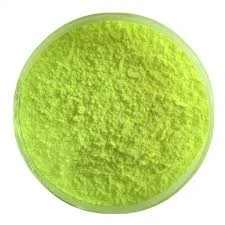Pentoxifylline An Overview
Pentoxifylline is a medication primarily used to improve blood flow in patients with conditions that impair circulation. Specifically, it is often prescribed for treating claudication, a condition characterized by muscle pain and cramps in the legs due to inadequate blood flow, typically due to peripheral vascular disease. As a member of the xanthine derivative family, pentoxifylline is chemically related to caffeine and works by altering the blood’s viscosity and increasing red blood cell flexibility, which ultimately helps to enhance microcirculation.
Mechanism of Action
Pentoxifylline exerts its effects through several mechanisms. It inhibits the action of phosphodiesterase, an enzyme that breaks down cyclic adenosine monophosphate (cAMP). By preventing the breakdown of cAMP, pentoxifylline helps to promote vasodilation and improve blood flow. Additionally, it reduces the aggregation of platelets and red blood cells, a key factor in enhancing blood flow to the tissues. This action helps alleviate pain and improve functional capacity in patients suffering from claudication.
Clinical Applications
Beyond its primary use for claudication, pentoxifylline has found applications in various other medical conditions. For instance, it has been investigated for its potential benefits in treating diabetic foot ulcers, thus playing a role in wound healing. Some studies suggest that pentoxifylline may aid in improving outcomes in patients with chronic venous insufficiency and might also have neuroprotective effects in patients with stroke.
It is worth noting that pentoxifylline is generally administered orally, with a common dosage being 400 mg taken three times daily with meals. The onset of action may take several weeks, necessitating patient adherence to the treatment regimen for optimal results.
medication pentoxifylline

Side Effects and Contraindications
While pentoxifylline is generally well-tolerated, it can lead to side effects in some patients. Common side effects include nausea, vomiting, headache, dizziness, and gastrointestinal disturbances. More serious complications, although rare, can include allergic reactions and cardiovascular events. Patients with a history of bleeding disorders or those who have recently undergone surgery should use pentoxifylline with caution.
Interactions with Other Medications
Pentoxifylline may interact with other pharmaceutical agents, which could alter its effectiveness or increase the risk of adverse effects. For example, it may potentiate the effects of anticoagulants and antiplatelet agents, raising the risk of bleeding. As such, clinicians must carefully review a patient’s medication profile and monitor for any potential interactions when prescribing pentoxifylline.
Conclusion
In summary, pentoxifylline is a valuable medication that enhances blood flow and is primarily employed in managing peripheral vascular disorders. Its unique mechanism of action, coupled with its applications in treating various conditions, underscores its significance in contemporary medical practice. As with any medication, it is crucial for healthcare providers to weigh the benefits against potential risks, ensuring that patients receive optimal and safe treatment. Through ongoing research and clinical application, pentoxifylline continues to play a vital role in improving the quality of life for patients with compromised circulation.

